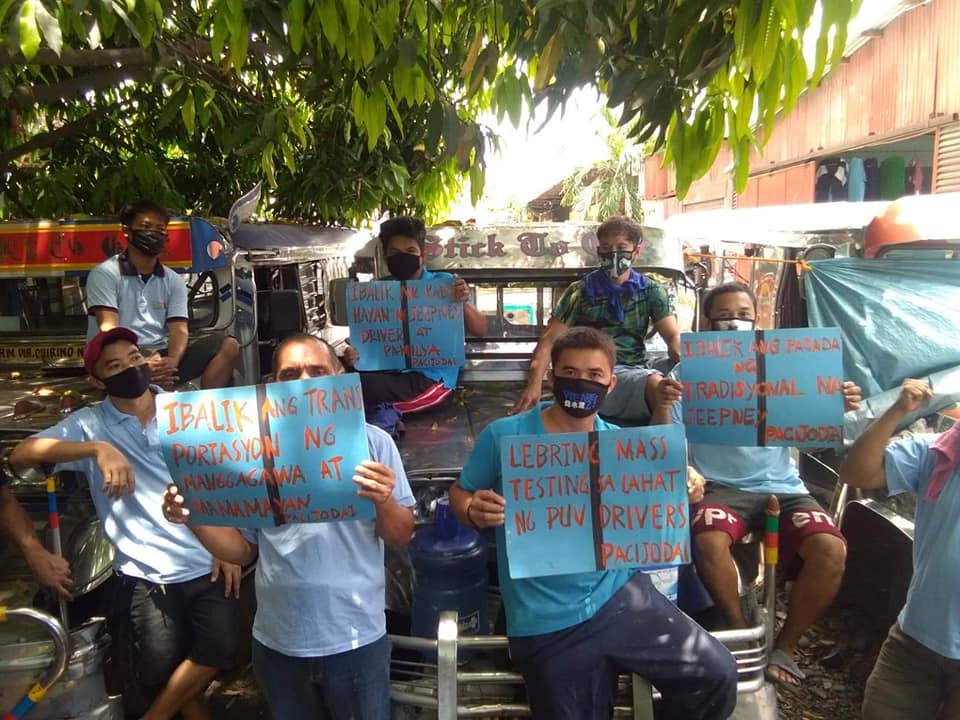Research group IBON said that the unemployment crisis is actually even worse than official figures show. The group estimates that the real unemployment rate is likely around 22% and the real number of unemployed around 14 million.
The April 2020 Labor Force Survey (LFS) of the Philippine Statistics Authority (PSA) released on June 5 reported 7.3 million unemployed and 6.4 million underemployed.
Department of Labor and Employment (DOLE) Secretary Silvestre Bello III said the 17.7 percent unemployment rate in the PSA LFS which translates to 7.3 million unemployed was the “highest,” overtaking the 10.3 percent unemployment rate in the 1998 recession in the Philippines.
“As it is, this is the worst government-recorded unemployment (7.3 million) and combined unemployment and underemployment (13.7 million) in the country’s history,” stressed IBON.
But IBON pointed out that the changed definition of unemployment since 2005 lowered officially reported unemployed Filipinos. Since the methodology for counting the unemployed was revised in April 2005, jobless Filipinos who did not look for work in the last six months or are unable to immediately take up work are no longer considered unemployed and removed from the labor force.
With this, IBON said that the technical definition of unemployment does not count as much as 4.1 million Filipinos who did not formally enter the labor force because of the enhanced community quarantine and another 2.6 million that the revised unemployment definition since April 2005 no longer counted.
The revised unemployment definition tends to underestimate the magnitude of unemployment by 35% and the unemployment rate by 3.3 percentage points. An initial correction for this would mean an additional 2.6 million jobless Filipinos who should be counted as unemployed according to the previous definition, said the group.
The latest LFS of the PSA said all regions reported double-digit unemployment rates. The highest unemployment rate was in Bangsamoro Autonomous Region in Muslim Mindanao at 29.8 percent, followed by Region III (Central Luzon) and Cordillera Administrative Region with unemployment rates recorded at 27.3 percent and 25.3 percent, respectively.
In January 2020, the PSA reported a 94.7 percent employment rate, same as in January 2019. The unemployment rate was estimated at 5.3 percent and it was the same in January 2019. Employment rate in April 2020 fell to 82.3 percent from 94.7 percent in January 2020. Employed persons are classified as either full-time workers or part-time workers.
More jobs in BPO industry
Meanwhile, Bello is optimistic that the COVID-19 pandemic and the subsequent global recession will force the West to offshore more jobs in the Business Process Outsourcing (BPO) industry.
“We received information that some big companies have already given notice for their requirements, one of which needing at least 4,000 seats to be filled up before September,” Labor Secretary Silvestre H. Bello III said on June 14, following a meeting with Information Technology (IT)-BPO industry leaders.
Rey Untal, president and chief executive officer of the IT Business Process Association of the Philippines (IBPAP), told DOLE officials in the meeting that companies continue to hire to fill the demand of the industry even amid the pandemic.
The meeting was said to have been prompted by reports on a recent online survey of a BPO employees’ group. An online survey with 146 respondents conducted by the BPO Industry Employees Network (BIEN) from May 19 to May 26, 2020 revealed that 37.7 percent or roughly four out of 10 BPO workers are either in floating or “no work-no pay” status.





























